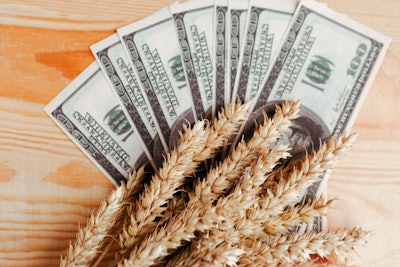
Commodity prices may fall in the coming year as demand cools, but inflation could limit relief
January seems to have brought another year of uncertainty for commodity markets, with competing forces potentially pulling prices in either direction as the coming weeks unfold.
The U.S. Department of Agriculture (USDA) made minimal changes to its monthly World Agriculture Supply and Demand Estimates in the January 11 release. The agency cut expected global corn production by 1.6 million tons due to dry weather ahead of the harvest in South America. Global soybean production, similarly, decreased 9.5 million tons in spite of new data that suggest the U.S. did in fact grow a record soybean crop in 2021. The USDA anticipates higher prices for both commodities.
Independent economists, however, saw reason to disagree, prompting soybean futures to rise and then fall again while corn plummeted in the days after the release of the report. While weather has affected potential yields in Brazil and Argentina, multiple economists said, global demand for corn and soybeans is also in decline, raising questions about whether prices will rise or fall in the coming year.
“This is where I get a little grumpy, if you will, because I have a problem with demand,” said Emily French, co-founder of Global Ag Protein, during a Tuesday webinar hosted by the U.S. Soybean Export Council. “I think demand has been grossly overlooked.”
French noted that exports of soybeans are down nearly 9 million tons year over year, although the USDA’s report did not reflect this trend. “That’s a big hole, and just because Brazil’s crop got smaller, does not translate to the idea that this hole is going to be dug out,” she said.
James Mintert, director of Purdue University’s Center for Commercial Agriculture, highlighted similar trends during a presentation on January 14. Soybean exports, and purchases by China in particular, are down nearly 30% so far this year.
“Exports are down substantially,” Mintert said. “Really soft exports so far on the soybean side are why some people expected USDA to back off that number in this report.”
Exports of corn are also down, Mintert said, by about 9% compared to last year.
While current prices remain high, with July corn futures selling for US$5.88 per bushel and soybeans for US$13.95 as of Friday morning, Nathan Thompson, an associate professor of agricultural economics at Purdue University, did not believe prices would maintain those heights. Futures bids on this fall’s crop, he said, put prices for soybeans at US$13 per bushel and corn at US$5.59.
However, the rising costs of critical good such as seeds, fertilizers and pesticides made Michael Langemeier, associate director of the Center for Commercial Agriculture at Purdue, question how much lower prices could go. He estimated that to earn a profit on corn would require a price in the range of US$5.46 per bushel, and US$12.24 for soybeans
Soybeans may look like the more profitable crop, but Langemeier said he anticipated farmers would err on the side of caution and plant a mix of both crops this year to hedge their bets, on account of the number of variables that could change with little notice in the coming months.
The price of corn could exceed US$6 this summer, Mintert agreed, but expecting US$6 he said is a “bet on poor weather in South America and stronger ethanol demand than USDA is currently forecasting.”
“Neither of those are certain. They could happen. We could see prices move higher, but” other factors could also cause price to fall, Mintert said.











